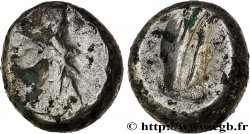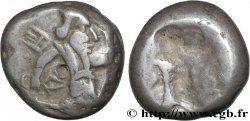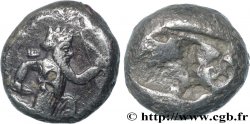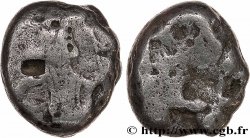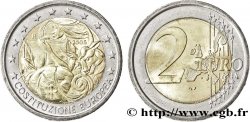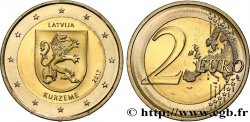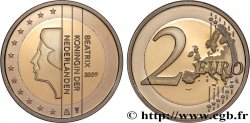Zurück 1/1
v38_0283 - PERSIEN - ACHÄMENIDISCHE KÖNIGE Darique d'or
MONNAIES 38 (2009)
Startpreis : 750.00 €
Schätzung : 1 500.00 €
Erzielter Preis : 932.00 €
Anzahl der Gebote : 5
Höchstgebot : 1 975.00 €
Startpreis : 750.00 €
Schätzung : 1 500.00 €
Erzielter Preis : 932.00 €
Anzahl der Gebote : 5
Höchstgebot : 1 975.00 €
Type : Darique d'or
Datum: c. 500-400 AC
Name der Münzstätte / Stadt : Lydie, Sardes ?
Metall : Gold
Durchmesser : 14,5 mm
Gewicht : 8,35 g.
Seltenheitsgrad : R1
Kommentare zum Erhaltungszustand:
Exemplaire sur un petit flan, bien centré
N° im Nachschlagewerk :
Vorderseite
Titulatur der Vorderseite ANÉPIGRAPHE.
Beschreibung Vorderseite Archer barbu (Le Grand Roi) a demi agenouillé courant à droite, couronné (cidaris), tenant une lance de la main droite et un arc de la gauche.
Rückseite
Beschreibung Rückseite Carré creux informe.
Kommentare
Ce type de darique est souvent usé et a circulé pendant plus d’un siècle. C’est le premier multiple en or frappé en quantité très importante. Au revers, le carré creux pourrait prendre la forme d’un animal (tête de lion à droite, la gueule ouverte, cf. E. Babelon, Perses Achéménides, pl. I, n° 10 pour un sicle). Ce type est souvent attribué à Darius Ier 521-486 avant J.-C.) ou à Xerxès (486-465 avant J.-C.).
This type of daric is often worn and circulated for over a century. It is the first gold multiple struck in very large quantities. On the reverse, the hollow square could take the form of an animal (lion's head to the right, mouth open, cf. E. Babelon, Perses Achéménides, pl. I, n° 10 for a shekel). This type is often attributed to Darius I (521-486 BC) or to Xerxes (486-465 BC).
This type of daric is often worn and circulated for over a century. It is the first gold multiple struck in very large quantities. On the reverse, the hollow square could take the form of an animal (lion's head to the right, mouth open, cf. E. Babelon, Perses Achéménides, pl. I, n° 10 for a shekel). This type is often attributed to Darius I (521-486 BC) or to Xerxes (486-465 BC).








 Berichten über einen Fehler
Berichten über einen Fehler Die Seite drucken
Die Seite drucken Teilen meiner Auswahl
Teilen meiner Auswahl Stellen Sie eine Frage
Stellen Sie eine Frage Einlieferung/Verkauf
Einlieferung/Verkauf
 Details
Details